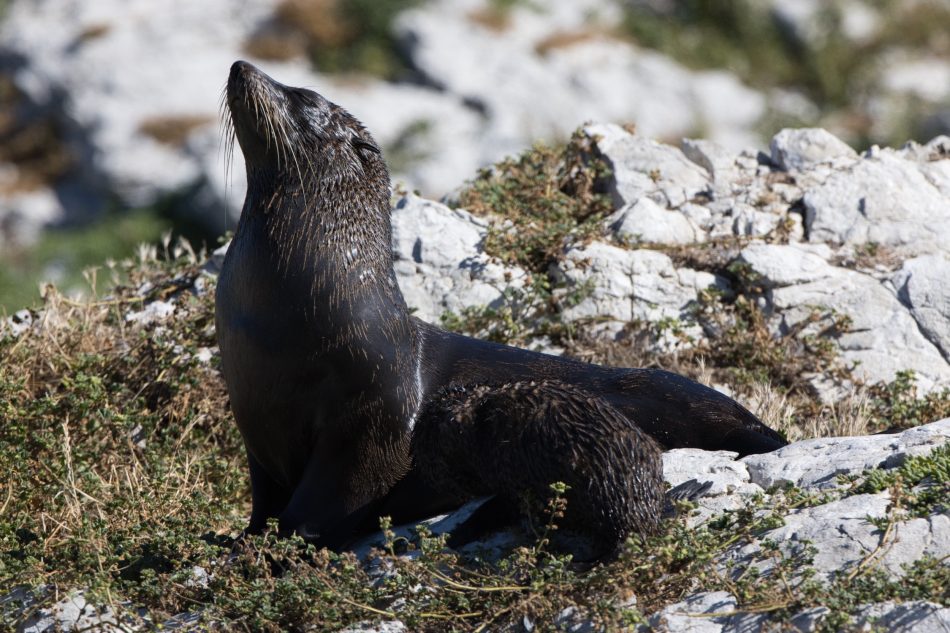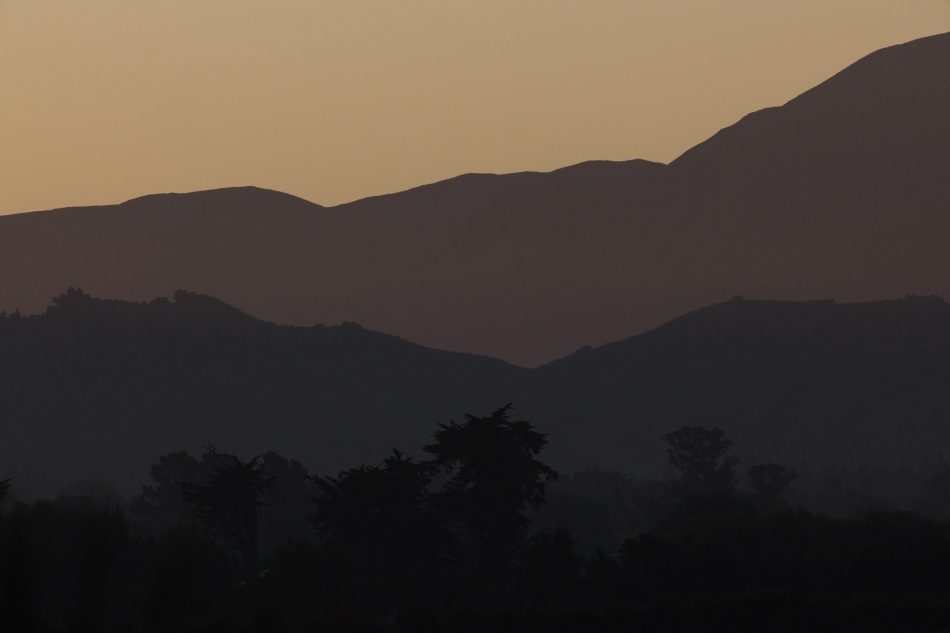
Kaikoura was one of the highlights of the trip with it being a mecca for aquatic wildlife – one of the few places on the planet were true pelagic birds can be seen within a few minutes of leaving shore. To try and take advantage of this wonderful opportunity, we had booked an ‘Albatross Encounter’ at 9am on our first day, a ‘Whale Watching’ trip at 10am on our second day and a 6am Albatross Encounter on our last day. Unfortunately, the last one was cancelled on the day due to bad conditions but the other two were very successful.
No apologies for the photograph heavy nature of these posts!
It was a lovely calm morning without a cloud in the sky when we headed out with Gary on the Albatross Encounter. We were soon followed by a few birds – mainly a couple of albatross and giant petrels.

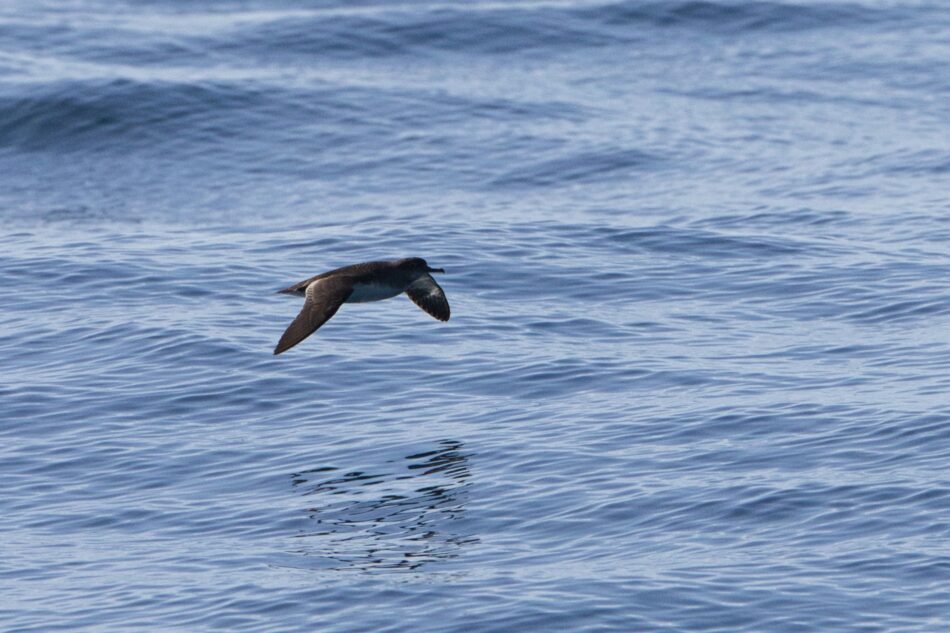
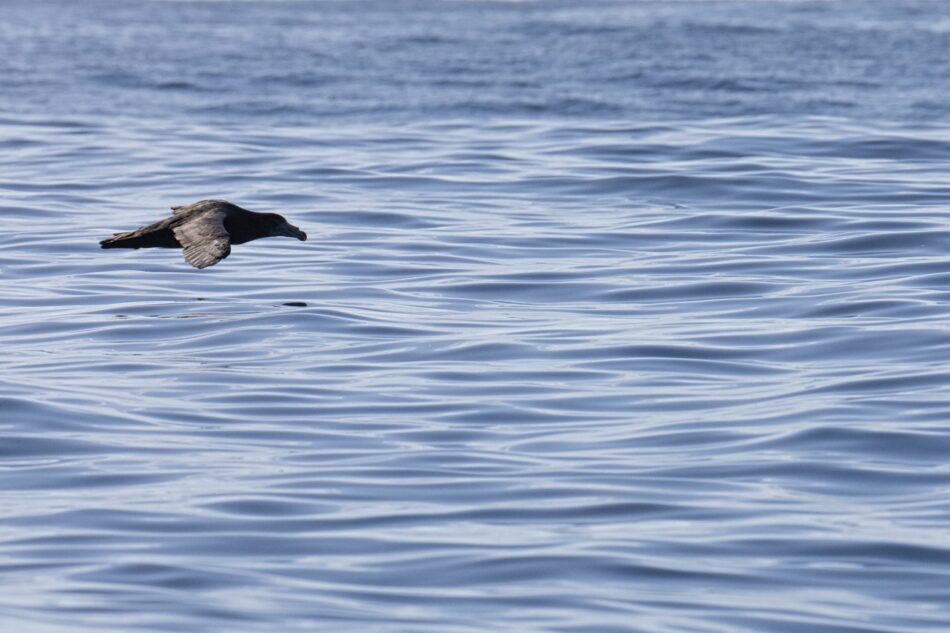
After a short trip, Gary stopped the boat and deployed the burley which brought all the birds in close.

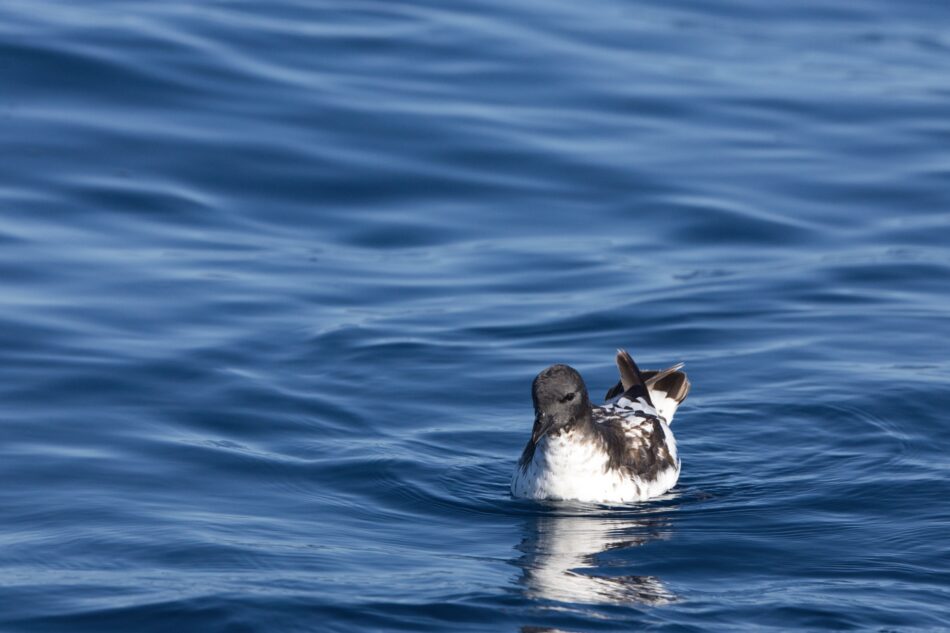
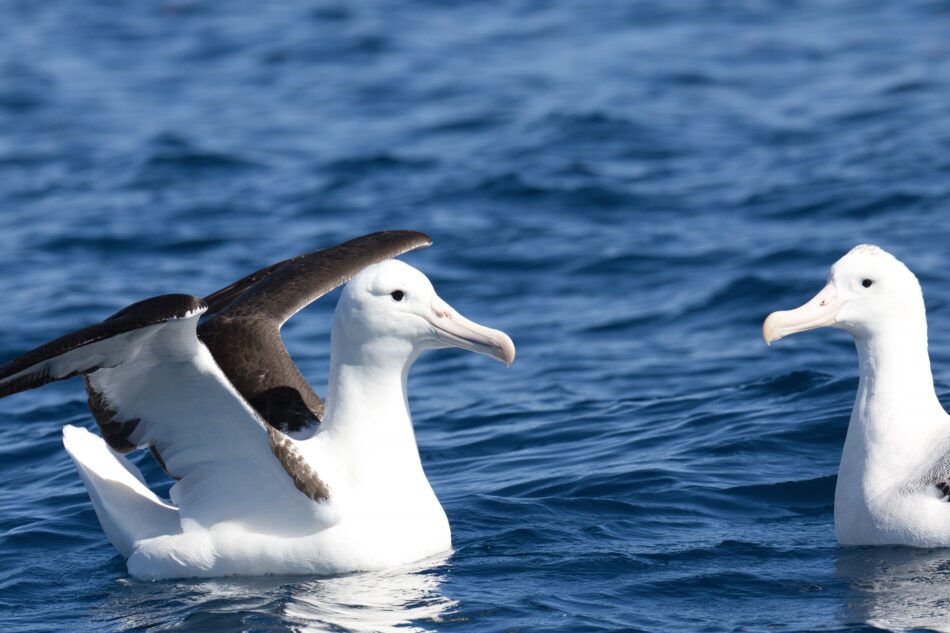
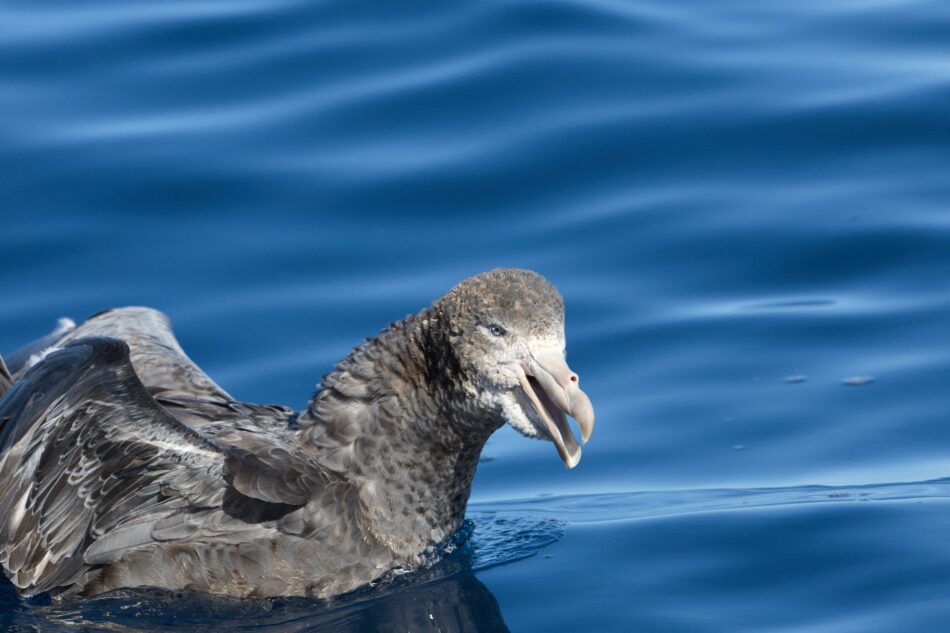
The giant petrels provided a lot of entertainment with their posturing and display antics. Each new arrival at the boat was an opportunity for the pecking order to be reestablished – the older individuals with the increasing amounts of white around their head, seemed to take this more seriously than the younger birds who wisely tried to keep out of it.
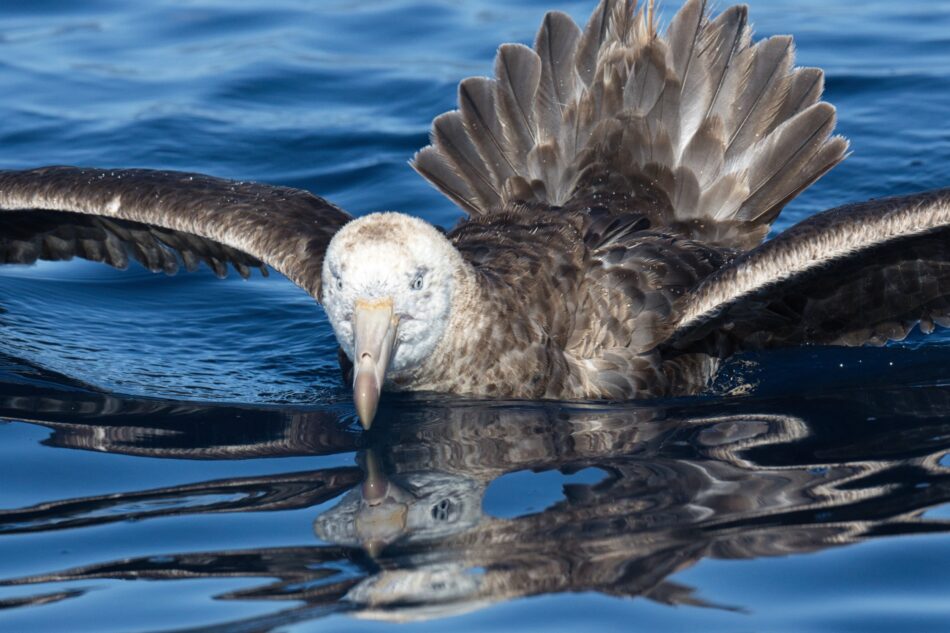
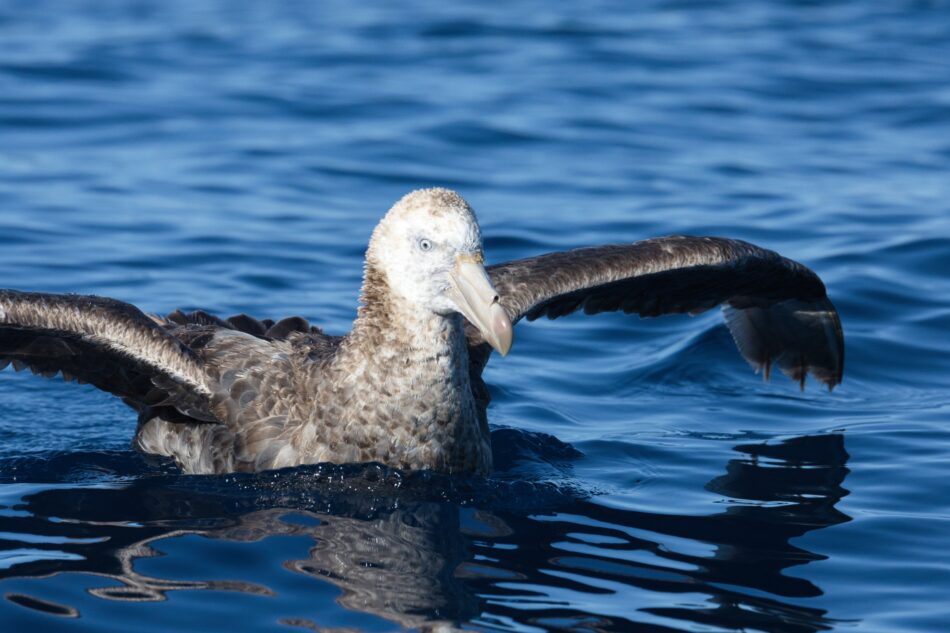
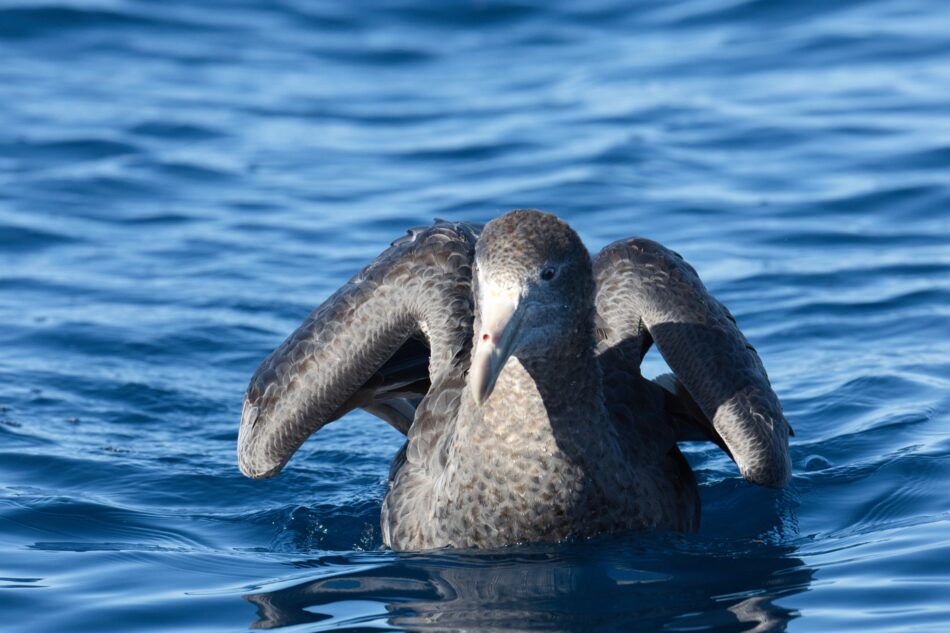
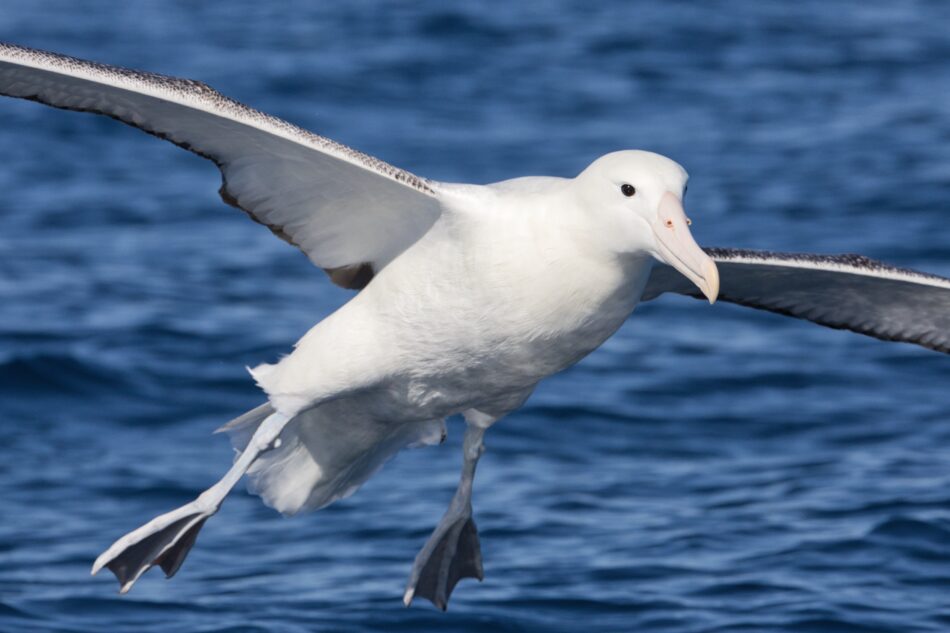
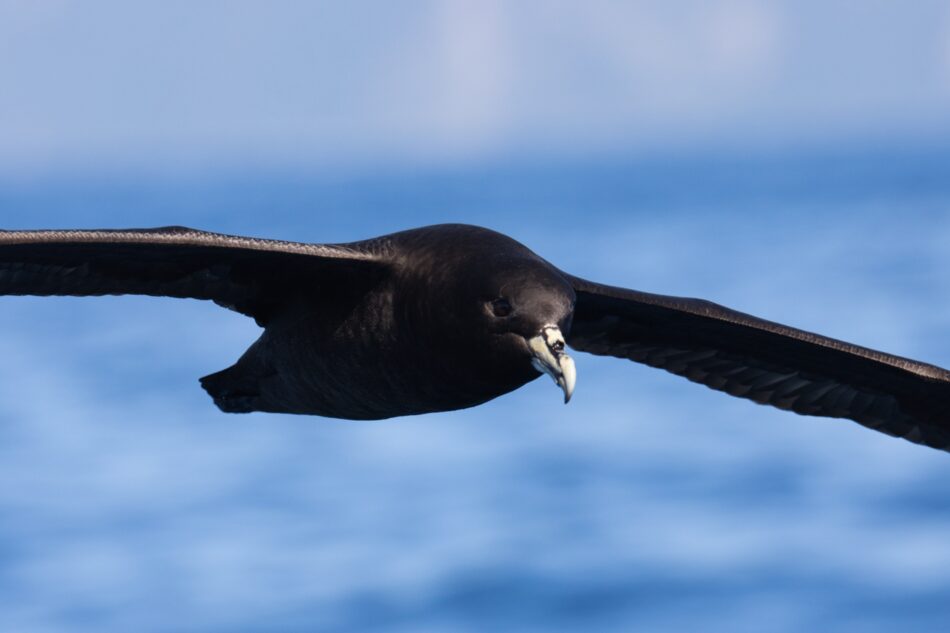

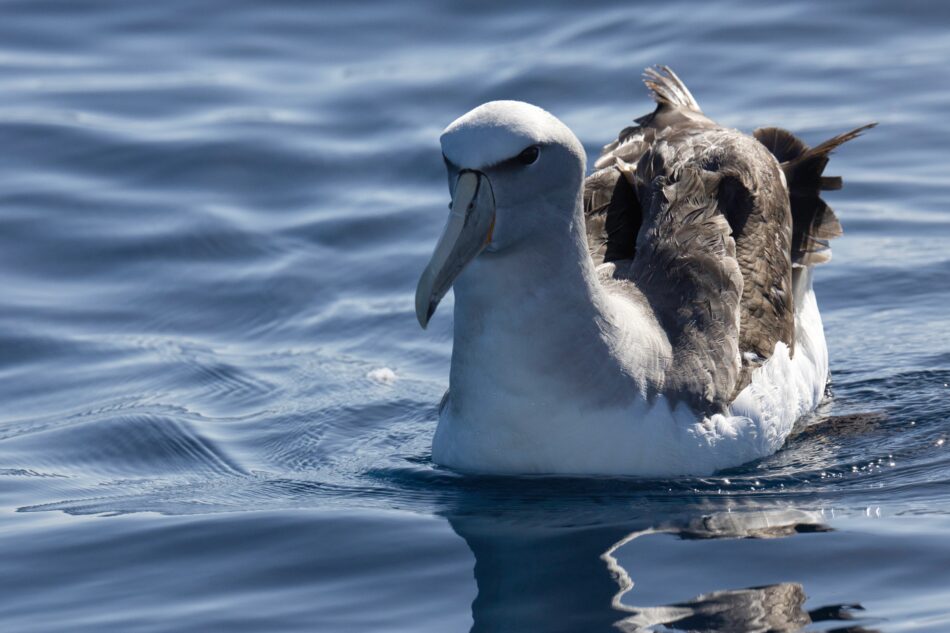
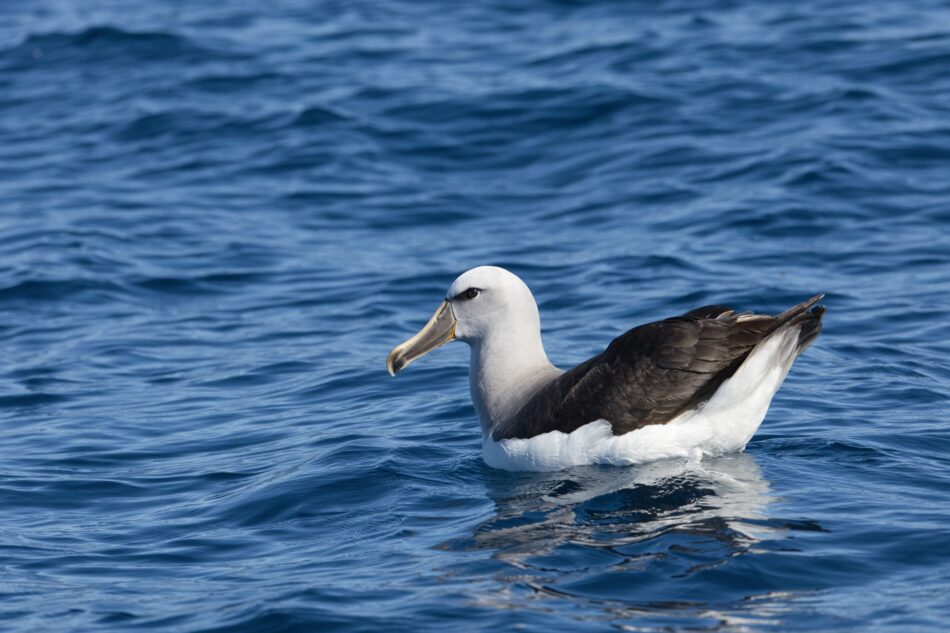

It was mind boggling to see all the pelagic birdlife within such close proximity to the shore. This video gives a better impression of what the view generally looks like! It also illustrates how calm and windless it was – not great pelagic conditions but even so, it was a great experience!
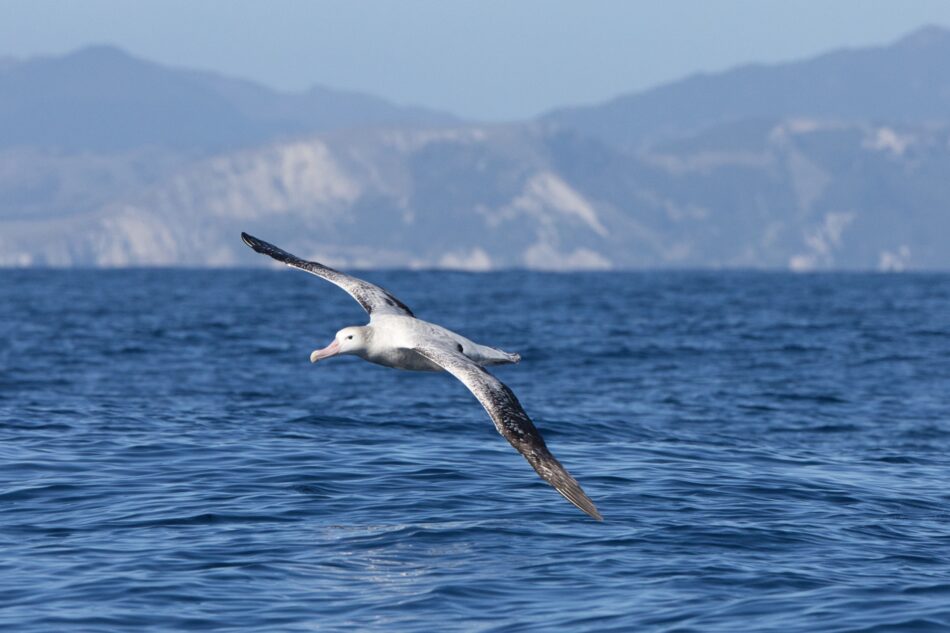
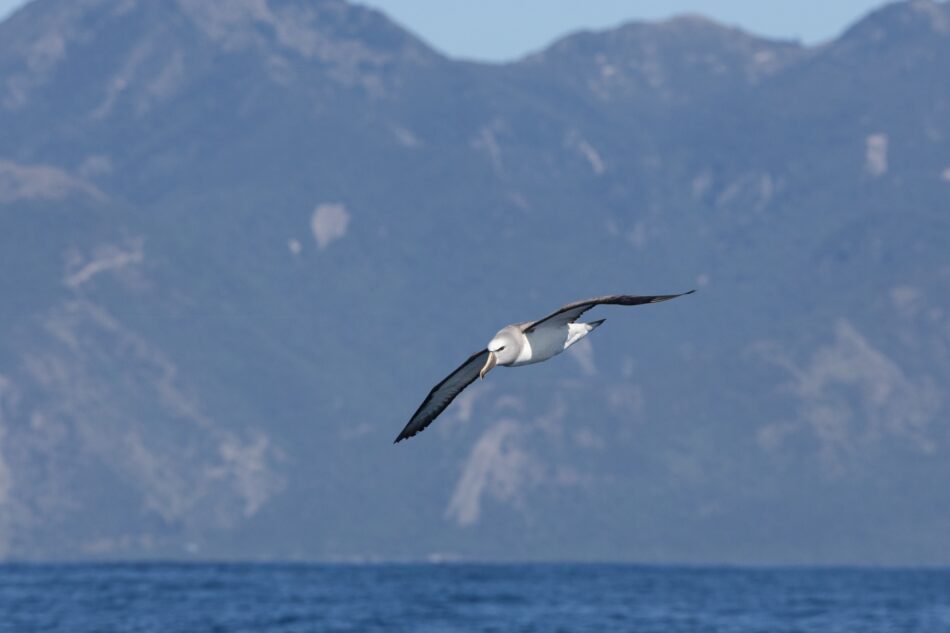
There seems to be an established hierarchy amongst the seabirds with the Wandering Albatross trying to maintain dominance, despite the lack of respect shown by the bolshy Giant Petrels. The slightly smaller and gentler Royal Albatross and Cape Petrels keeping out of the tussle and looking for scraps around the edges.
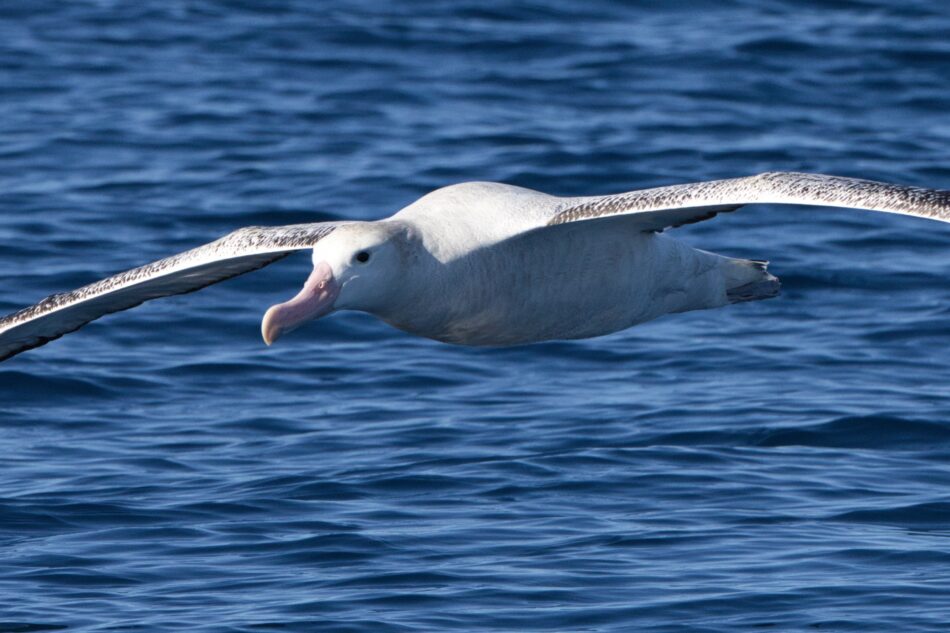
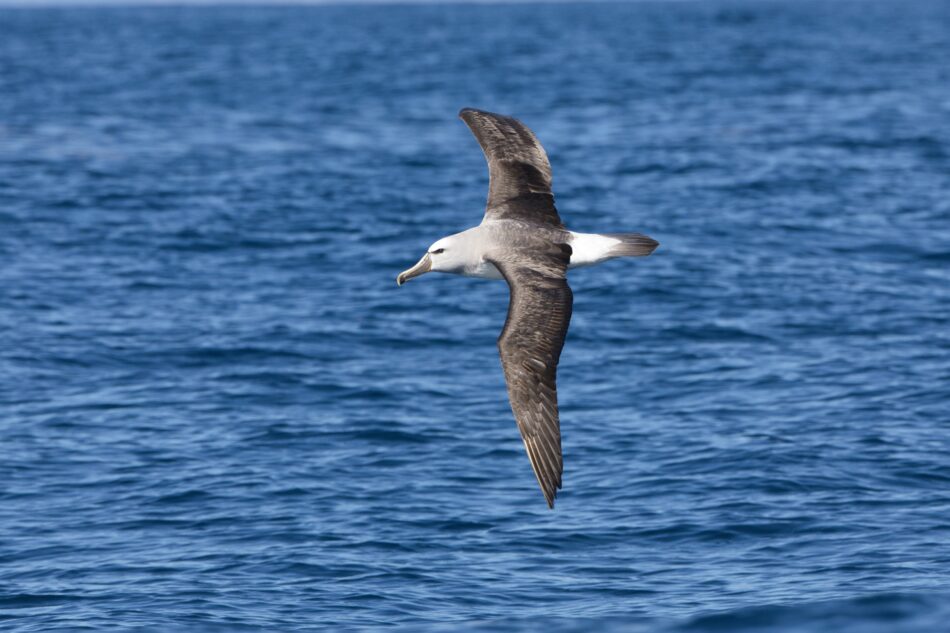


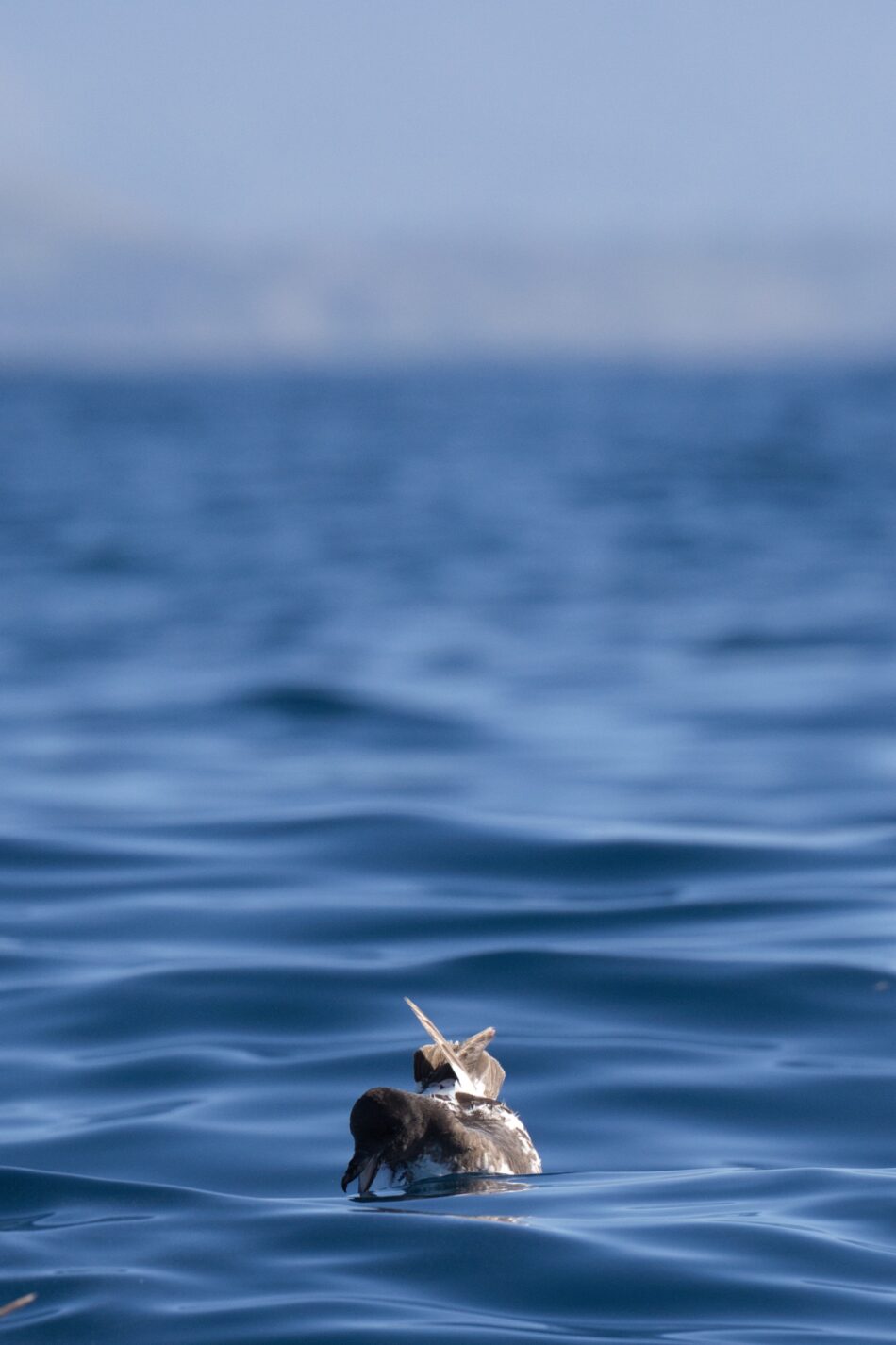
After a couple of stops out at sea in an area known as ‘The Sea Mount’, we headed back closer to shore to ‘Barney’s Rock’ to check it out for roosting seabirds and other marine life.
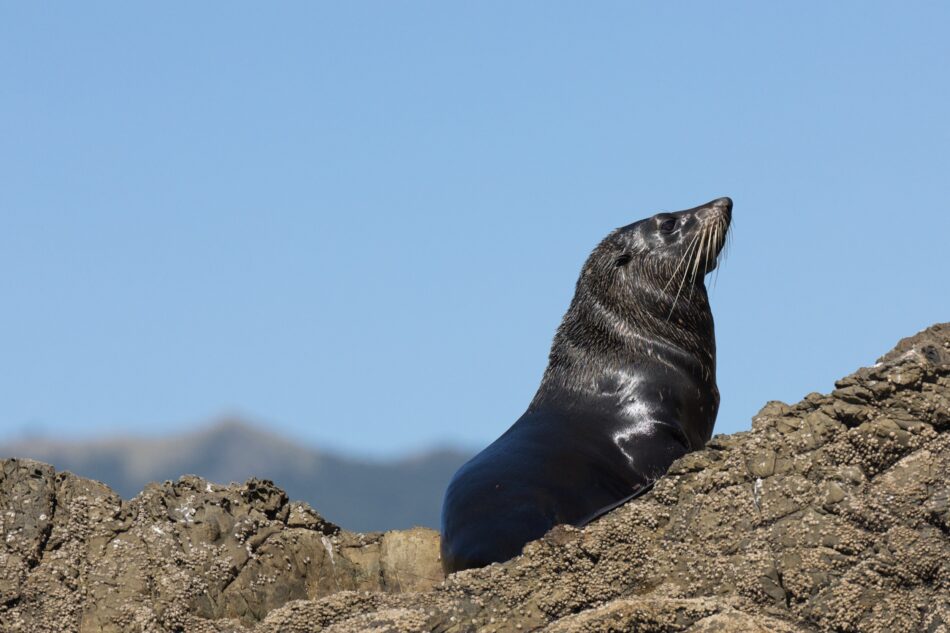
Heading back to the harbour, we had a surprise encounter with a pod of endangered Hector’s dolphins. These delightful and confiding mammals gave us a wonder experience darting around the boat. Too close for good photographs but I was able to take this short video.
I did however get this shot which clearly shows the distinctive rounded dorsal fin of the Hector’s dolphin.
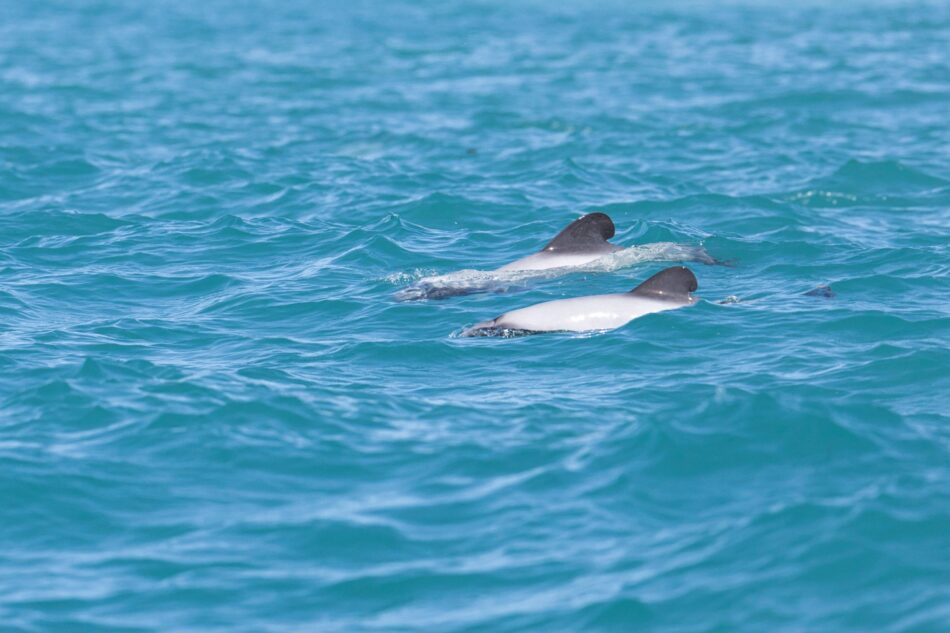
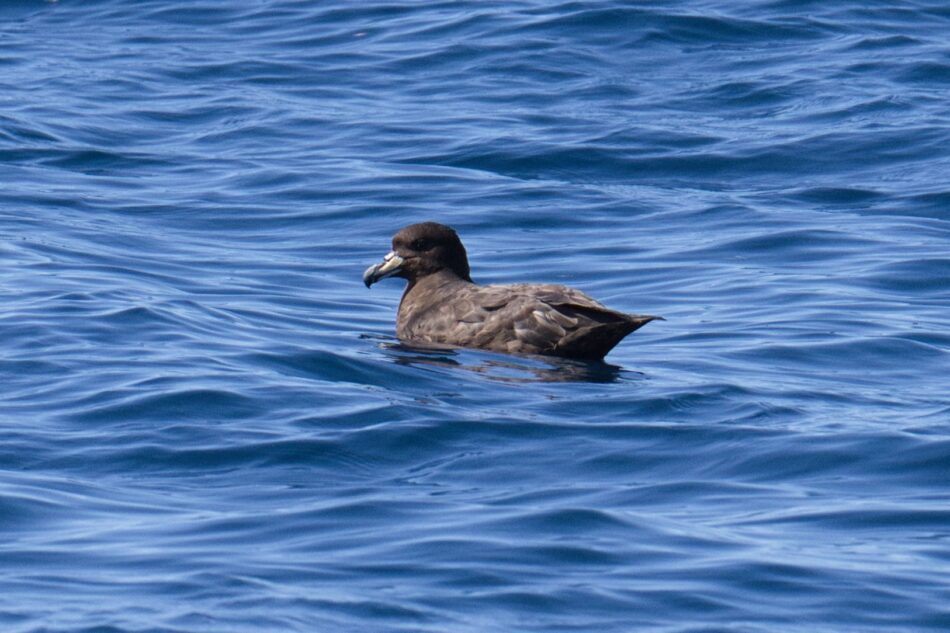
Not down as being seen on the trip checklist (unusual according to the skipper Gary, as these are normally the most commonly encountered petrel) but I snapped this record shot of a petrel when we were on our way back to shore which I later identified as a ‘Westland’ – distinguished from the similar white-chinned petrel by the darker tip to it’s bill.
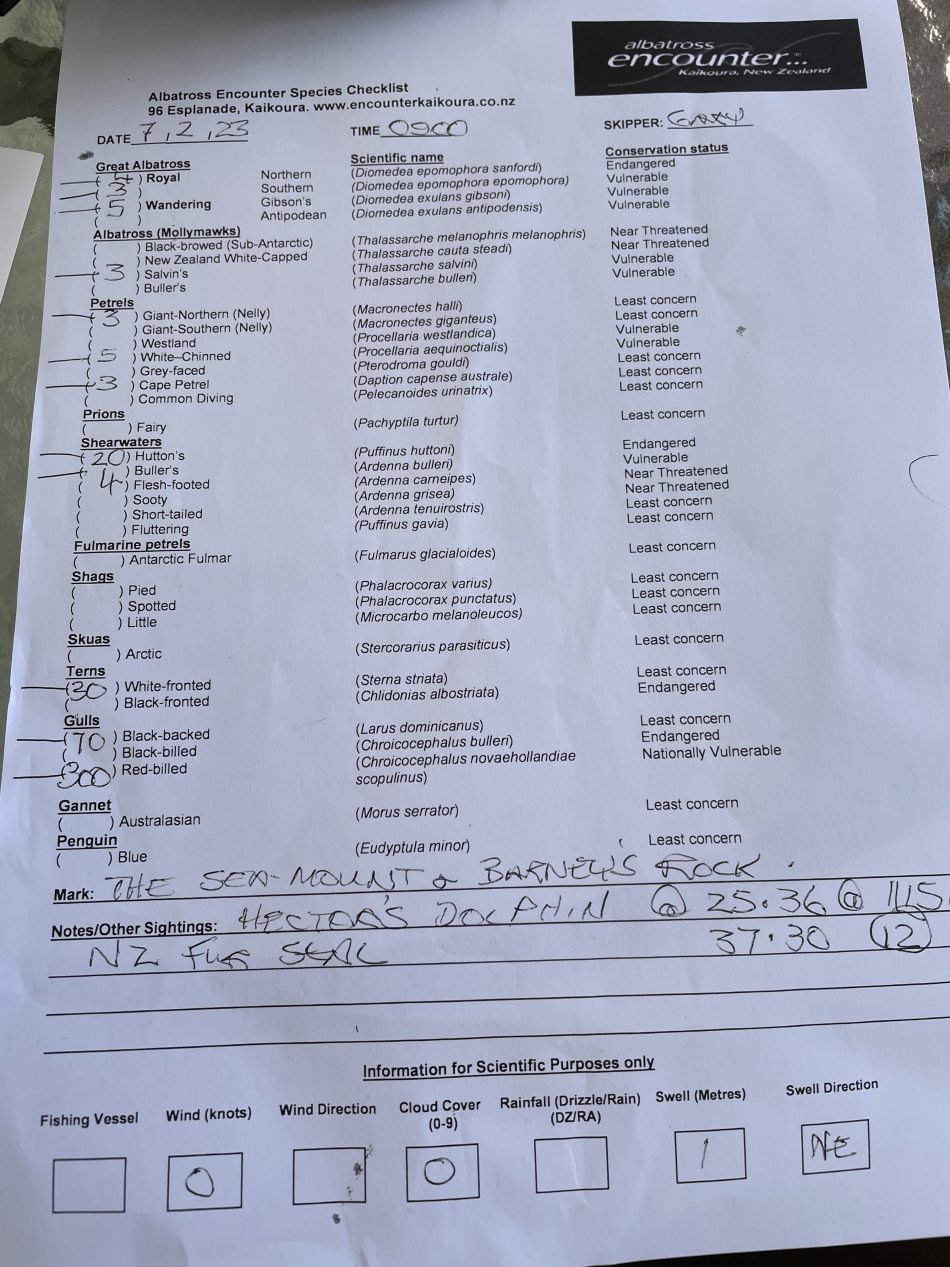
The ‘Whale Watching’ trip was a very different experience on the second day. A much more ‘commercial’ operation with a bigger, faster boat which efficiently transported the throngs of people from the harbour to where one of the resident sperm whales were last seen. Heading out further to sea offered tantalising flashes of seabirds out of the windows but the combination of being required to remain seated inside and the speed the boat was going, meant that most remained unidentified. On the plus side, one of the resident sperm whales was quickly found and watched for around 10 minutes before it took a last breath before disappearing deep under the surface.
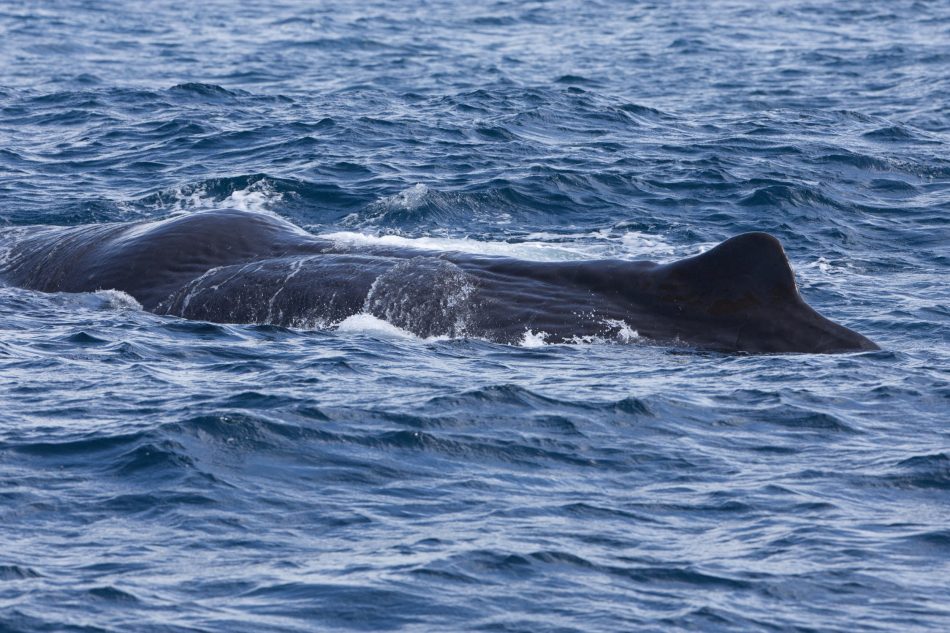
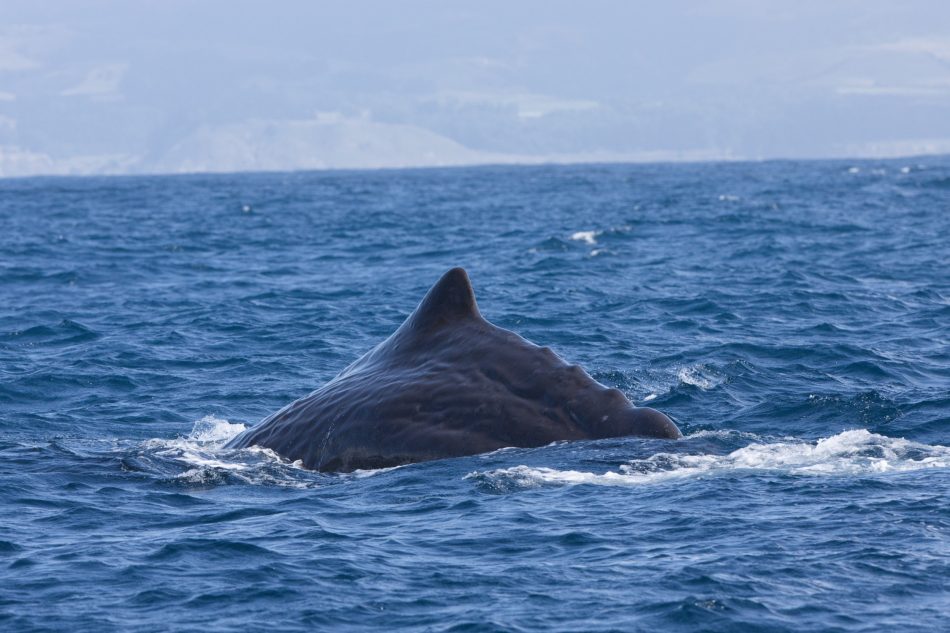

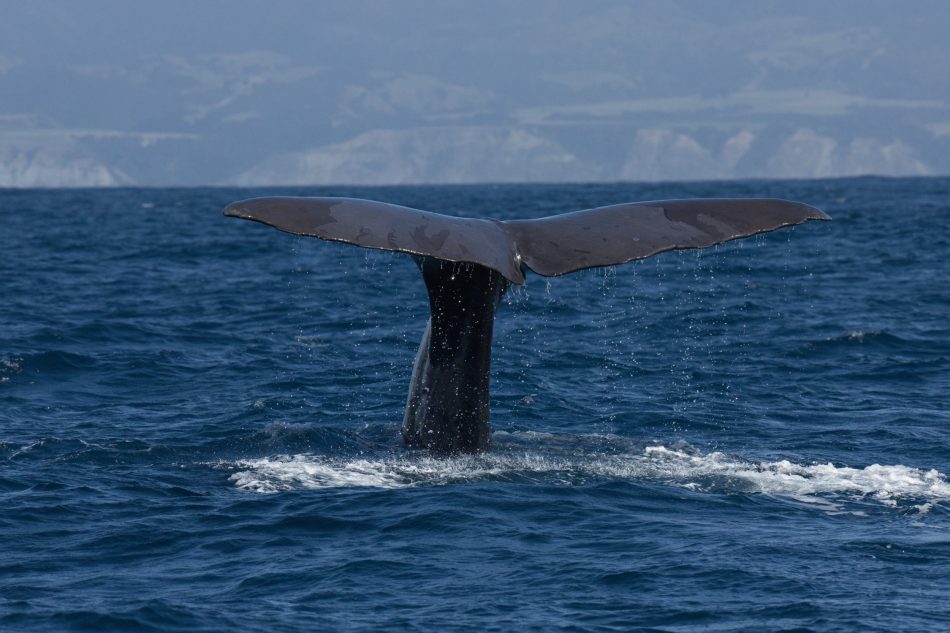
With a sighting of the sperm whale ‘in the bag’ and with it the risk of having to offer refunds under their ‘whale sighting guarantee’ abating, the trip back to shore was a much more relaxed affair – a chance for scores of passengers congregating at the stern of the boat to regain their composure and sea legs….
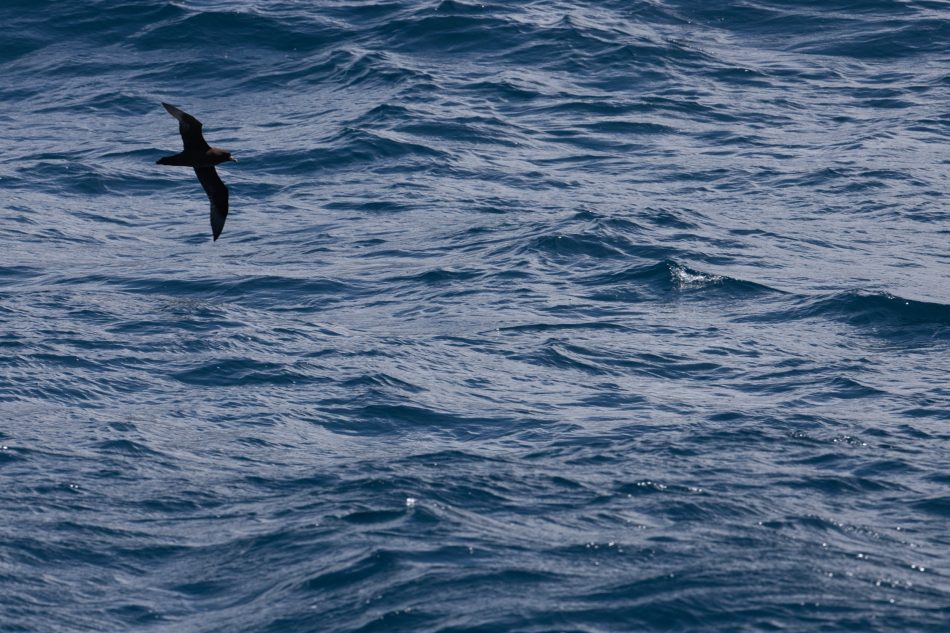
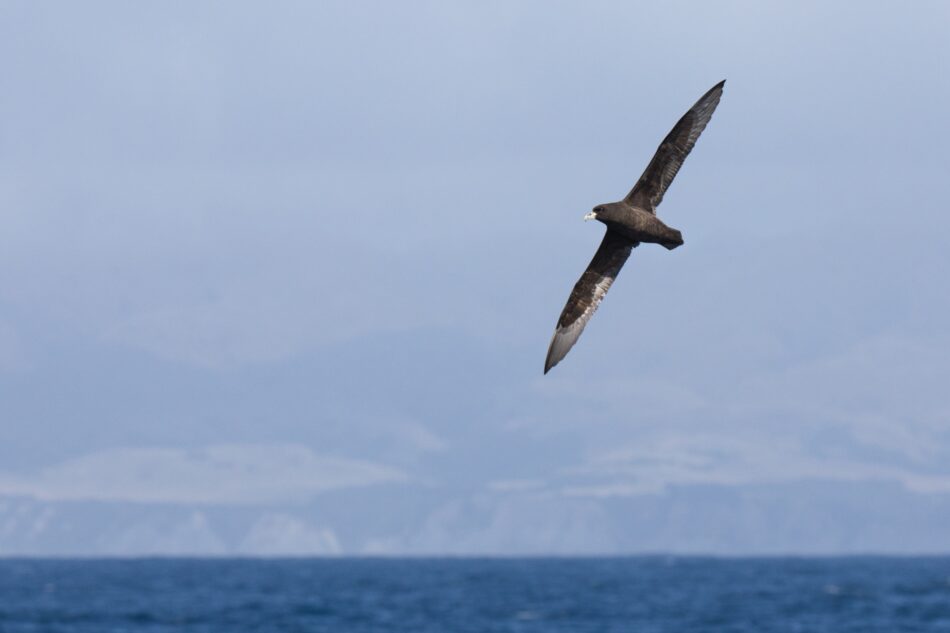
Going through my photo’s later, I also got this record shot of a different species – potentially a Cook’s Petrel

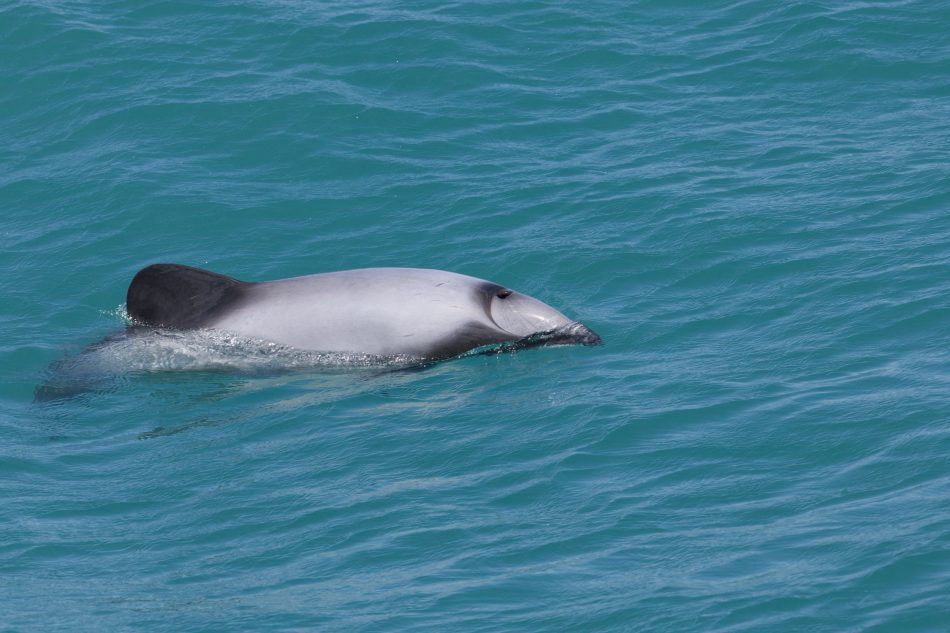
Amazingly the whale watching trip ended with another sighting of a pod of Hector’s dolphins. Not as intimate as the sighting on the Albatross Encounter but provided better photographic opportunities being higher up in the bigger vessel.
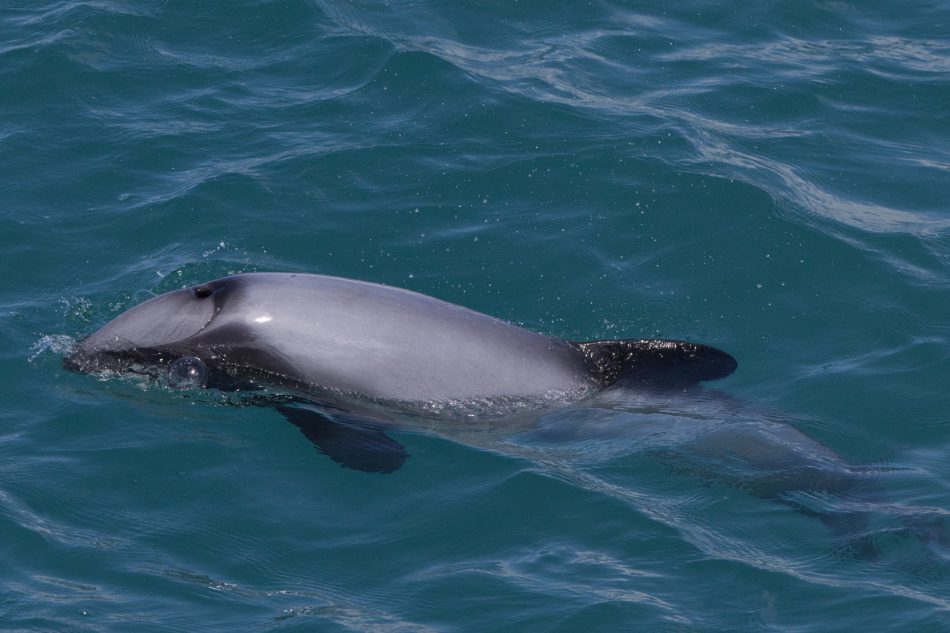
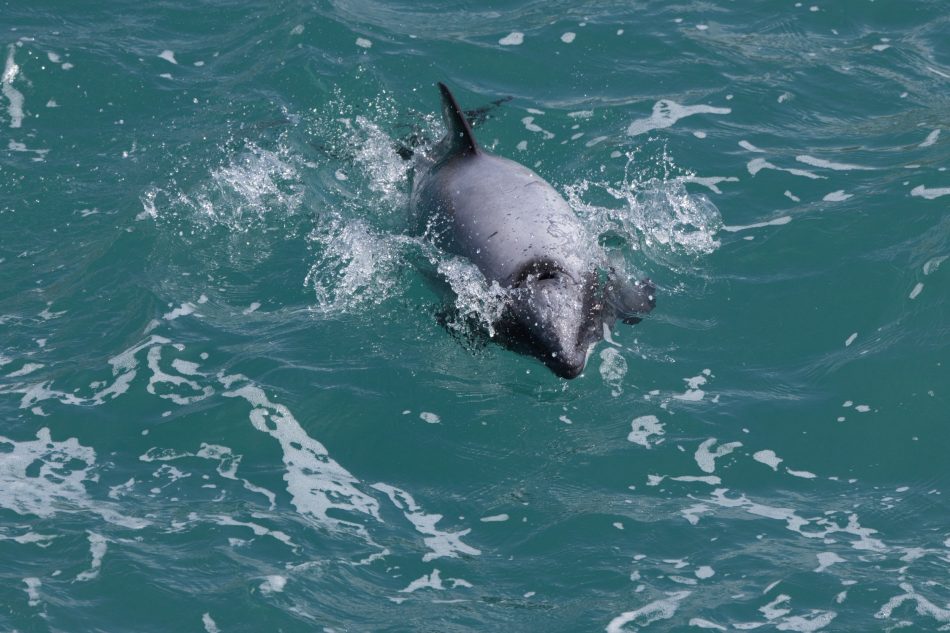
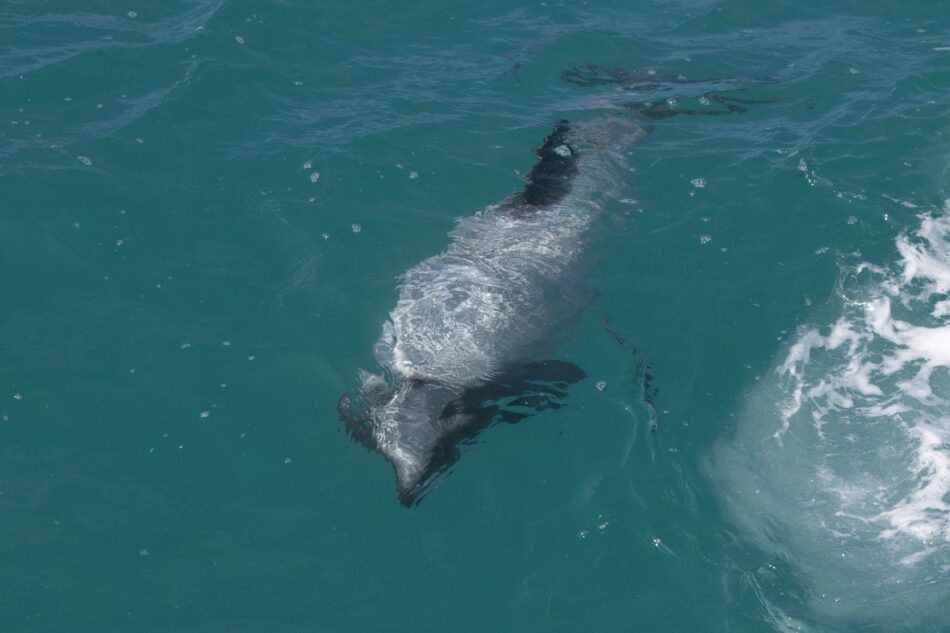
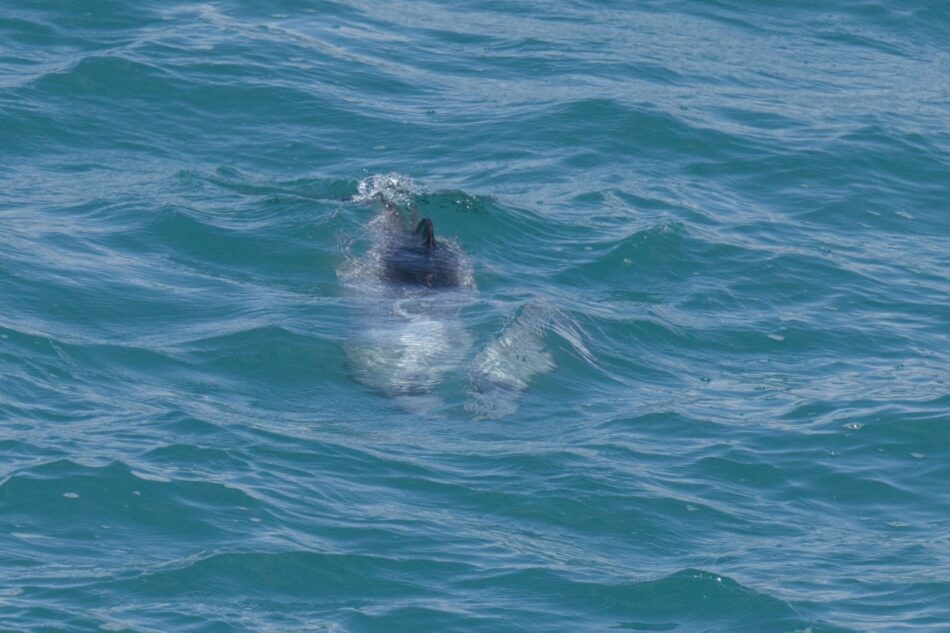
Hard to tell exactly what is going on under the water, but this image appears to show a mother and young – hopefully a sign of breeding success for this endangered dolphin.
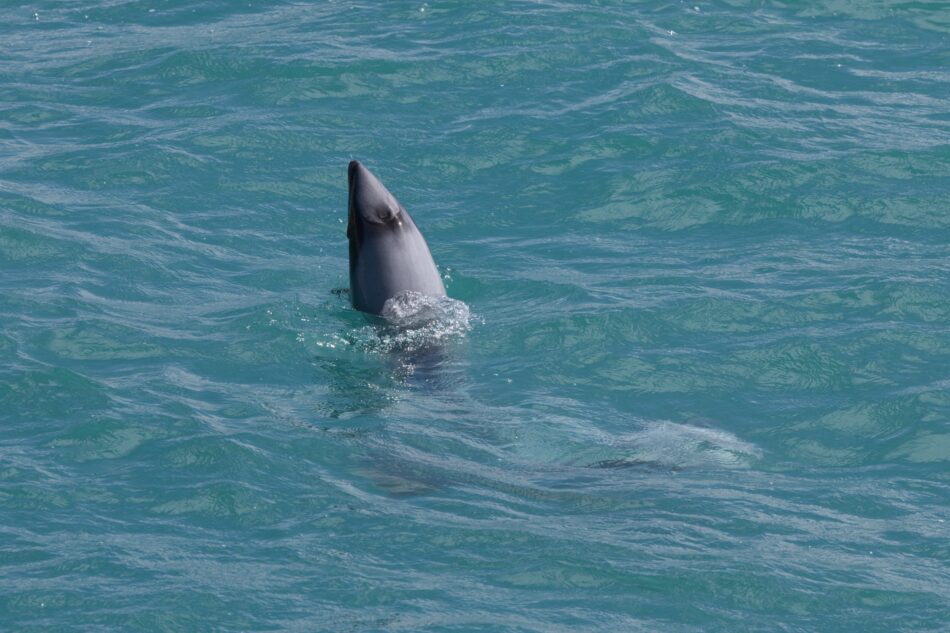
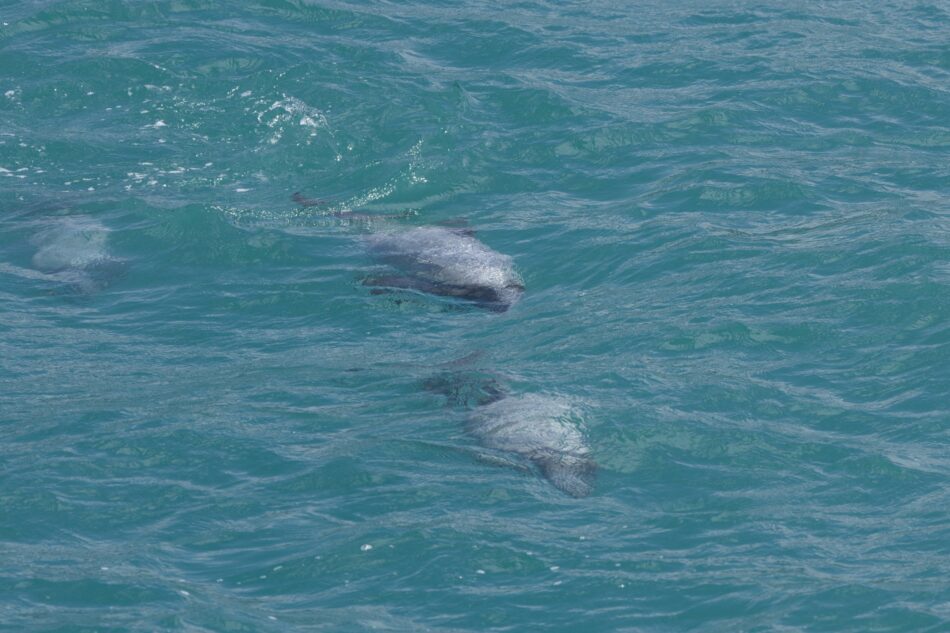
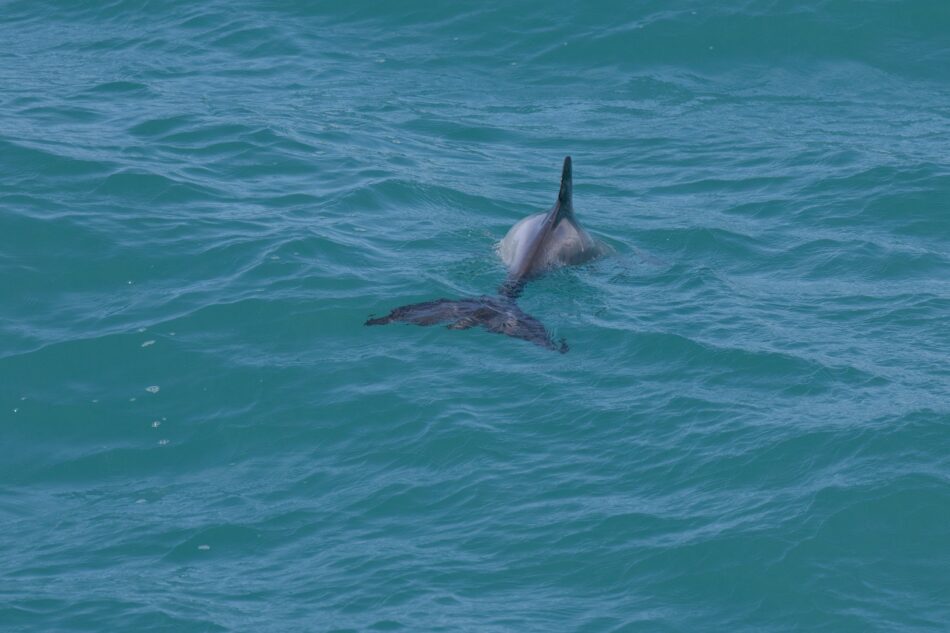
The afternoon was spent around Kaikoura with a walk along the XXX
